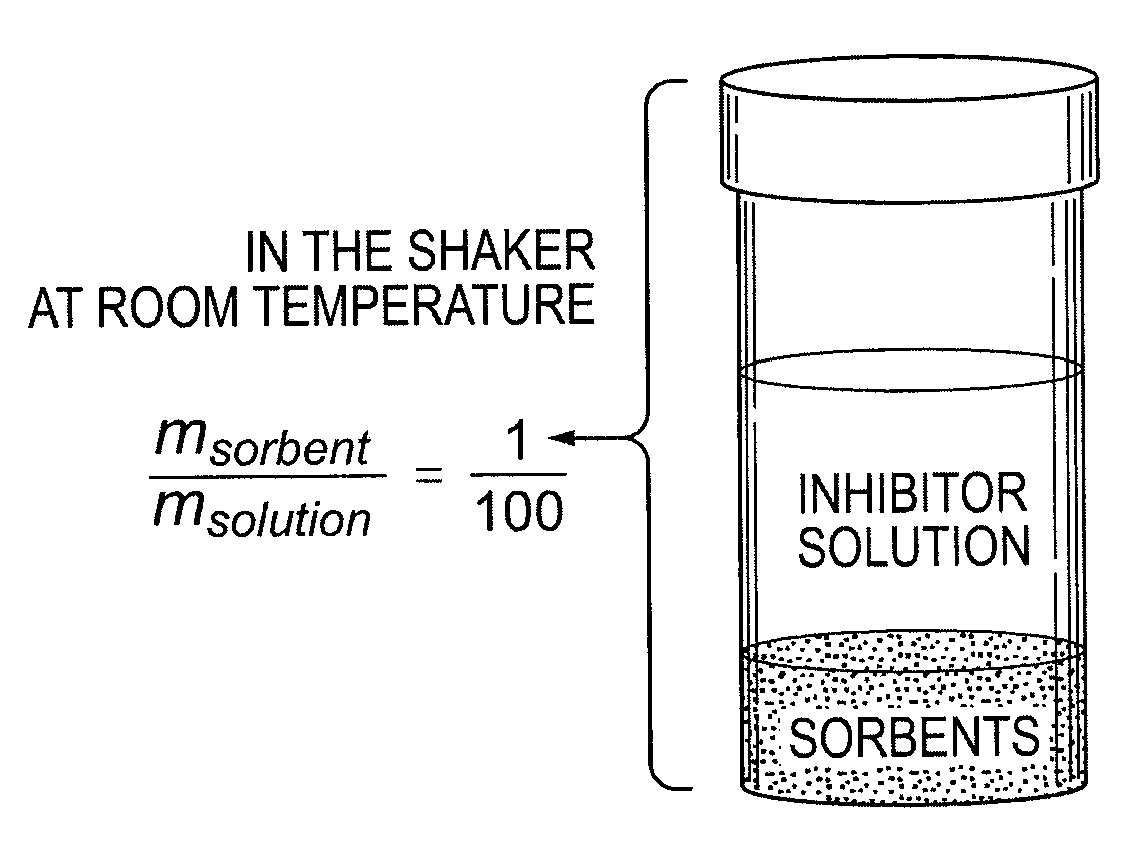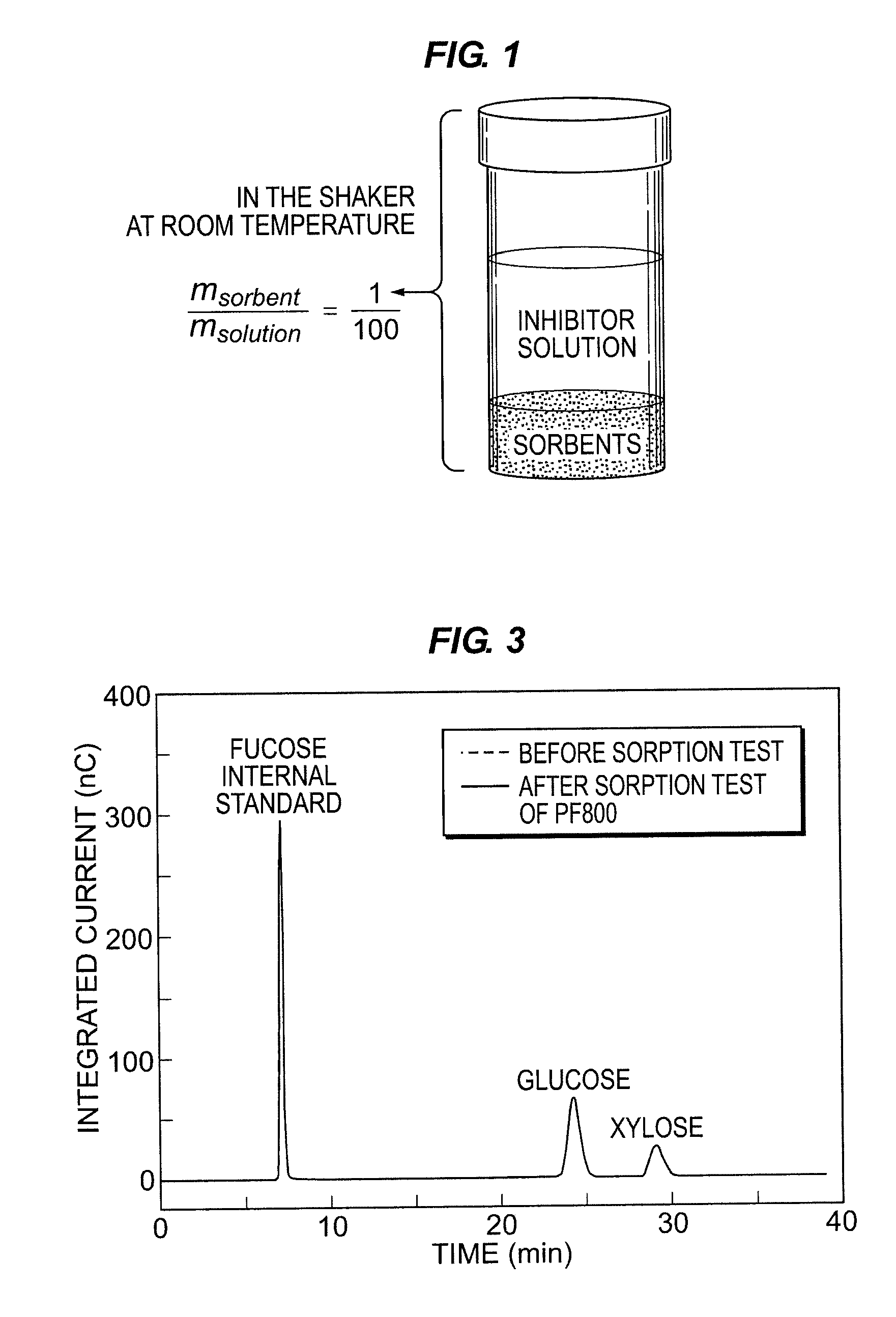Sorbent and process for removing fermentation inhibitors
a technology of inhibitors and sorbents, applied in the direction of separation processes, pulp liquor regeneration, sugar derivates, etc., can solve the problems of significant lag phase and wide utilization, and achieve the effects of reducing toxicity, reducing growth rate of z, and inhibiting microbial growth
- Summary
- Abstract
- Description
- Claims
- Application Information
AI Technical Summary
Benefits of technology
Problems solved by technology
Method used
Image
Examples
example 1
PF800 Sorbent Production and Selectivity in Batch System
[0037]A sorbent (PF800) was made by synthesizing polyfurfural by using furfural as the only monomer, H2SO4 as the catalyst, and ethanol as the solvent. The polyfurfural was pyrolyzed at 800° C. under argon atmosphere. To investigate the sorption property of PF800, sorption tests were performed in a shaker under room temperature as shown in FIG. 1. The inhibitor solution had the following composition (the concentrations were chosen so as to be close to those in switch grass hydrolysate): 0.33 wt % furfural, 0.03 wt % HMF, 1.2 wt % glucose and 0.2 wt % xylose. The concentration of furfural & HMF in the solution was determined by UV-Vis spectrophotometer and HPLC, respectively.
[0038]As shown in FIG. 2, the PF800 shows large sorption capacity even at low solution concentration. This indicates good affinity between PF800 and furfural. Additionally, PF800 reaches equilibrium quickly which is indicative of rapid mass transfer property...
example 2
PF800 and Norit 1240 Partition Coefficient and Sorption Test in Column System
[0043]PF800's Kfurfural, partition coefficient of furfural shown below is calculated by the ratio of furfural concentration in sorbent to furfural concentration in liquid and is about 4100. PF800's Ksugar, partition coefficient of sugar shown below is calculated by the ratio of sugar concentration in sorbent to sugar concentration in liquid and in contrast to Kfurfural is only about 0.56. The small value of Ksugar indicates PF800 hardly adsorbs sugar in the water solution. As for Norit—1240, the commercial activated carbon from Norit company, Ksugar increases to 6.5, while Kfurfural is 4200, similar to PF800's Kfurfural Since Kfurfural is still much larger than Ksugar, the affinity between Norit—1240 and furfural is larger than the affinity between Norit—1240 and sugar. As a result, Norit—1240 adsorbs furfural preferentially to sugar in the water solution. However, when furfural concentration drops to a low...
PUM
| Property | Measurement | Unit |
|---|---|---|
| Temperature | aaaaa | aaaaa |
| Time | aaaaa | aaaaa |
| Mass | aaaaa | aaaaa |
Abstract
Description
Claims
Application Information
 Login to View More
Login to View More - R&D
- Intellectual Property
- Life Sciences
- Materials
- Tech Scout
- Unparalleled Data Quality
- Higher Quality Content
- 60% Fewer Hallucinations
Browse by: Latest US Patents, China's latest patents, Technical Efficacy Thesaurus, Application Domain, Technology Topic, Popular Technical Reports.
© 2025 PatSnap. All rights reserved.Legal|Privacy policy|Modern Slavery Act Transparency Statement|Sitemap|About US| Contact US: help@patsnap.com



